Key takeaways
- Activist teacher resources empower educators to address real-world challenges and promote social justice, transforming passive learning into active engagement.
- Hands-on science learning fosters curiosity and creativity, encouraging students to become active participants in their education through direct experimentation.
- NASA’s educational materials provide accessible, engaging content that enhances students’ understanding of complex scientific concepts through interactive activities.
- Effective hands-on teaching involves keeping activities simple, promoting open-ended questioning, and thorough preparation to enhance student engagement and discovery.
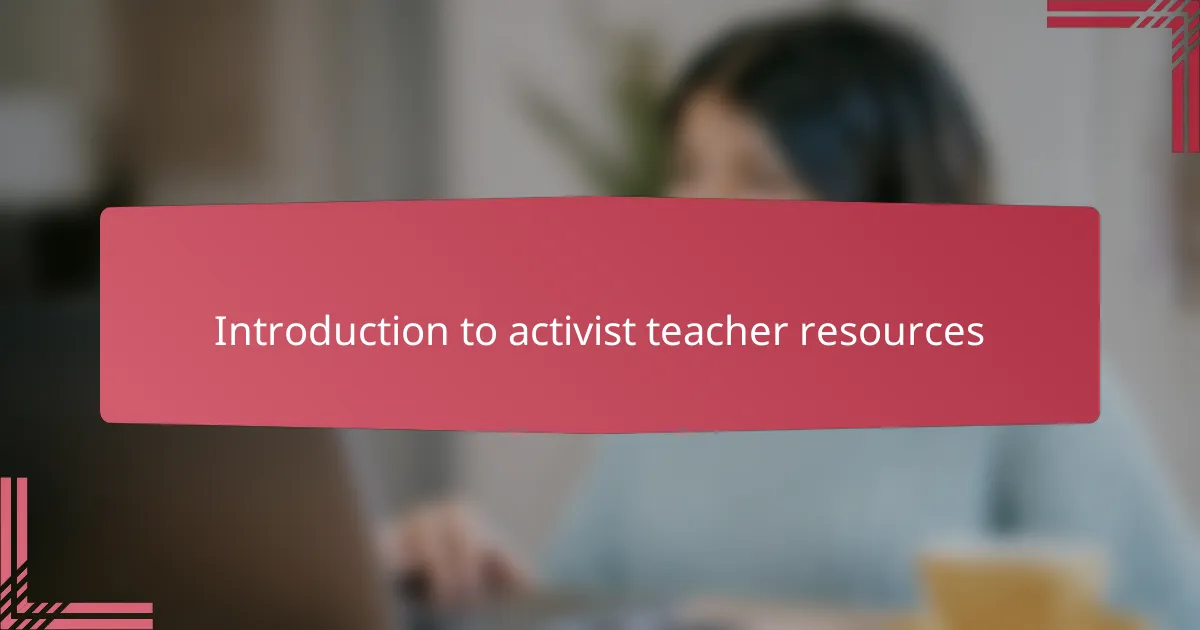
Introduction to activist teacher resources
Activist teacher resources are more than just materials; they are tools that empower educators to inspire change in their classrooms and communities. From my experience, having access to these resources transformed the way I approached teaching, making lessons more relevant and impactful. Have you ever felt that tinge of frustration when traditional curricula don’t address the issues that truly matter to your students? That’s where activist resources step in—they help bridge that gap by providing content grounded in real-world challenges and social justice.
What excites me most about activist teacher resources is their ability to spark meaningful conversations that go beyond textbooks. Using these tools, I witnessed students develop critical thinking skills and a sense of responsibility toward the world around them. The emotional connection that forms when students see their realities reflected in what they learn is powerful—it turns passive learning into active engagement.
At their core, activist teacher resources invite educators to be agents of change. They encourage us to ask, “How can I use my classroom as a platform for equity and empowerment?” This question constantly reminds me why teaching is not just a profession but a commitment to nurturing informed and compassionate citizens.
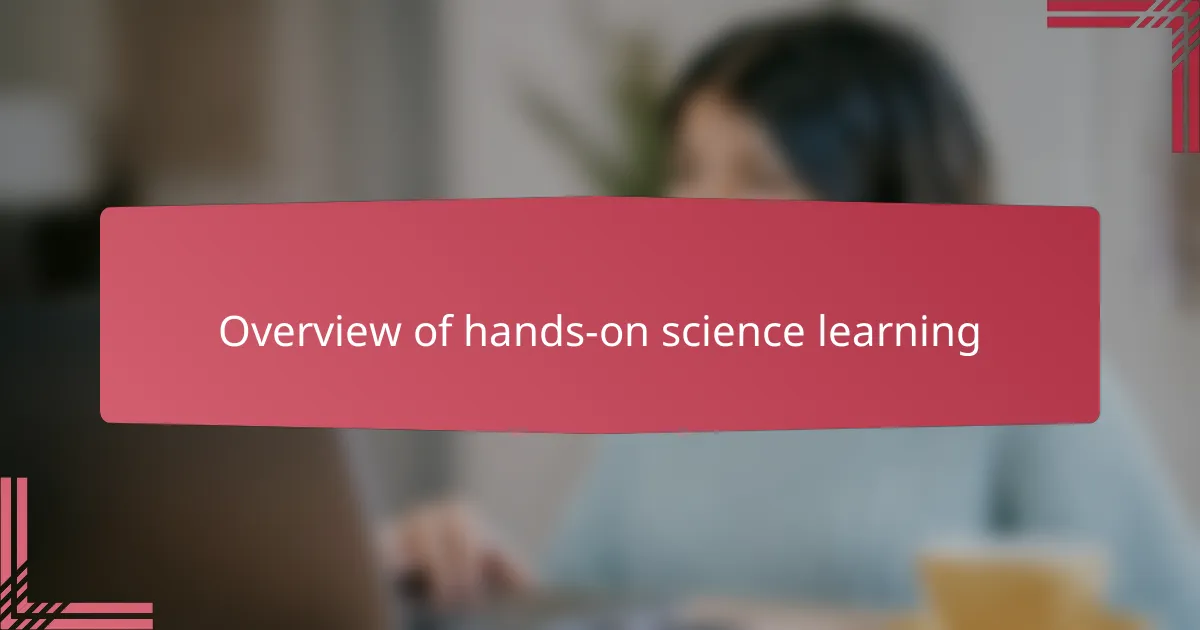
Overview of hands-on science learning
Hands-on science learning, from my perspective, is where curiosity truly meets discovery. It’s not just about reading facts or watching demonstrations; it’s about physically engaging with materials and experiments that bring scientific concepts to life. Have you ever noticed how students’ eyes light up when they get to touch, build, or test something themselves? That moment of direct interaction often sparks a deeper understanding and lasting interest.
When I first introduced hands-on science activities in my classroom, I saw a shift in how students approached problems. Instead of passively absorbing information, they began to ask “why” and “how” with genuine eagerness. This approach encourages trial, error, and creativity—skills that are essential for scientific thinking and beyond. It’s truly rewarding to witness learners transform into little scientists, full of questions and ready to explore.
What I’ve come to appreciate most is how hands-on learning connects abstract ideas to real-world experiences. It challenges students to step out of the traditional lecture format and become active participants in their education. Wouldn’t you agree that this kind of engagement not only makes science more accessible but also empowers students to see themselves as capable thinkers and problem solvers?
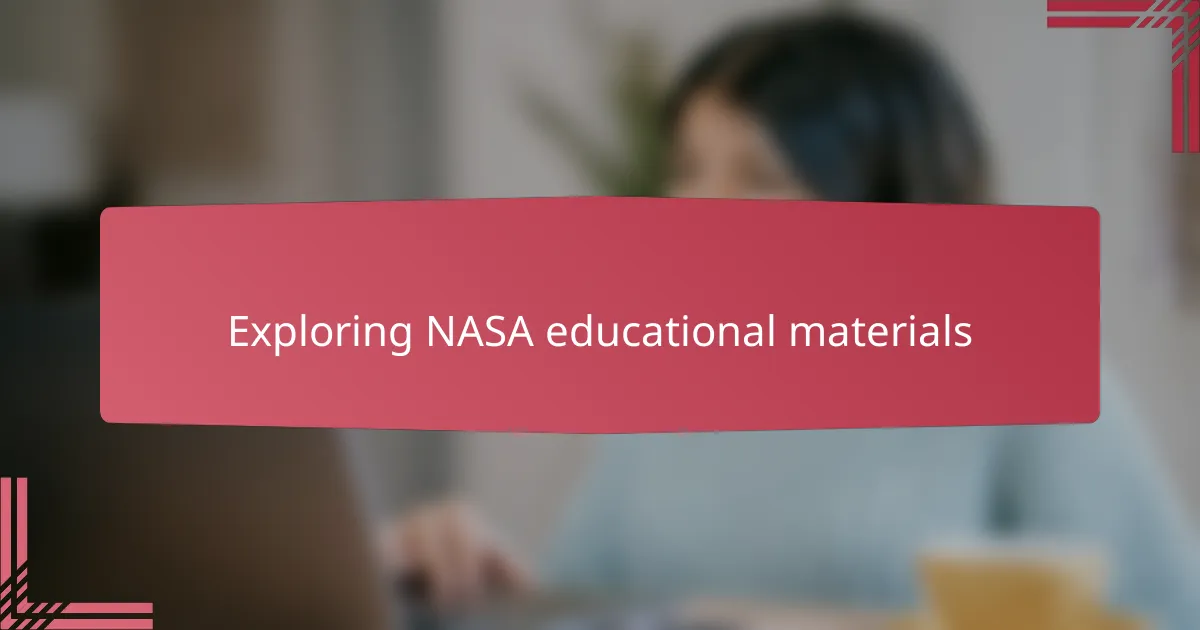
Exploring NASA educational materials
Diving into NASA’s educational materials felt like unlocking a treasure trove of authentic science content. I was amazed at how these resources weren’t just facts and figures but included interactive activities, videos, and lesson plans that connected complex space concepts to everyday learning. Have you ever found a resource that made you feel confident to bring advanced science topics into your classroom? That’s exactly what these materials did for me.
What struck me most was the accessibility of NASA’s content. Whether I needed a quick activity or a deep dive into planetary science, everything was organized and ready to use. This made planning hands-on lessons feel less like a chore and more like an exciting challenge. In one lesson, my students built simple astronaut helmets inspired by NASA’s actual designs, and their curiosity skyrocketed—they weren’t just learning about space, they were living it.
Exploring these materials also reminded me how important real science connections are for students’ motivation. When learners see that the content they’re engaging with comes directly from a leading space agency, it adds authenticity and inspires trust. Don’t you think that knowing scientists and engineers use this same information sparks a different kind of enthusiasm? For me, it’s the bridge between textbook learning and real-world exploration.
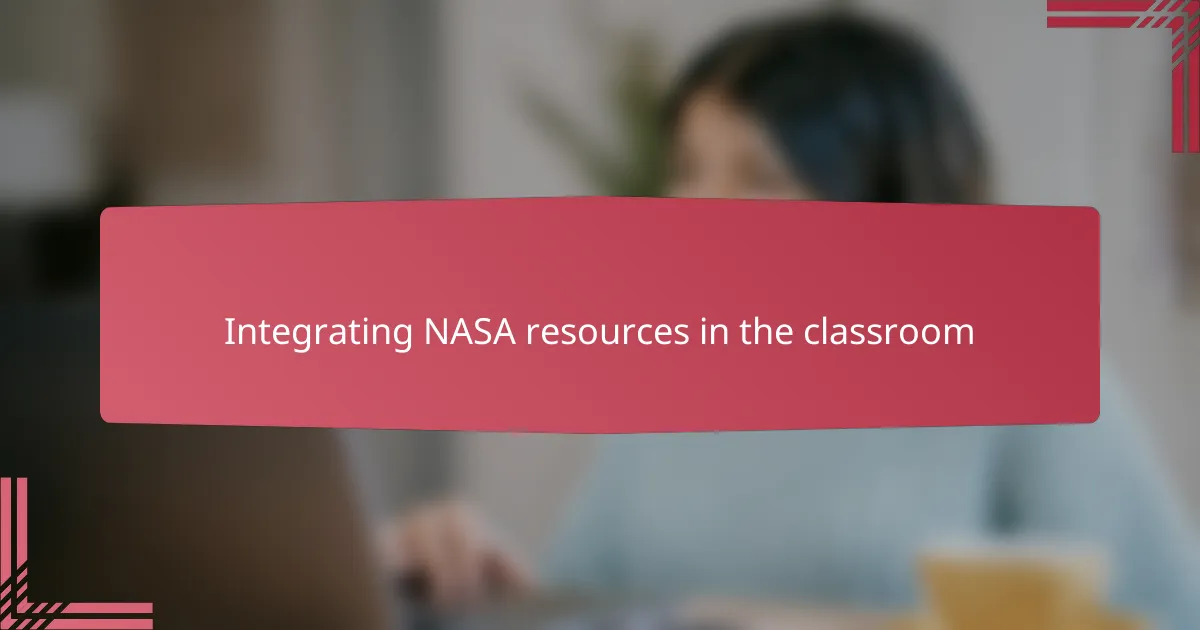
Integrating NASA resources in the classroom
Integrating NASA resources into my classroom transformed how I approached hands-on science. Instead of relying solely on textbooks, I introduced activities like creating scale models of the solar system using NASA’s guides. Watching students connect physical models to abstract concepts made me realize how these resources bring science to life in ways traditional materials can’t.
One thing that surprised me was how easily NASA’s materials fit into my existing lesson plans. The clarity and organization meant I could quickly adapt activities without feeling overwhelmed. Have you ever struggled to find quality, engaging content that also aligns with standards? Using NASA resources eliminated that challenge, giving me more time to focus on facilitating meaningful exploration rather than scrambling for materials.
But beyond logistics, what truly resonated with me was the sense of wonder these resources ignited in my students. When they realized they were working with the same tools and data scientists use, their enthusiasm deepened. It wasn’t just about completing an assignment; it became a shared journey into discovery, which from my experience, is the essence of impactful teaching.
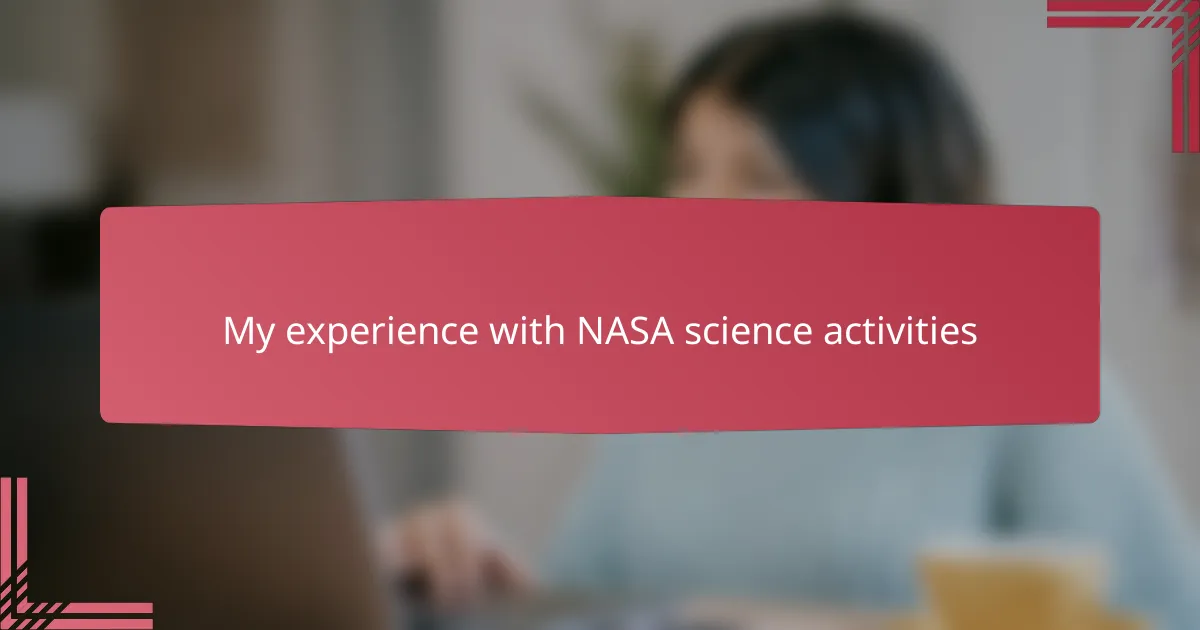
My experience with NASA science activities
Using NASA’s science activities in my classroom was a game-changer. I remember the moment when my students launched small paper rockets inspired by NASA’s designs—they were not just playing, but applying real physics concepts with wide-eyed excitement. Have you ever seen that spark when learning feels more like an adventure than a chore? That’s what NASA resources brought into my teaching.
What I found particularly rewarding was how these activities made abstract space science tangible. Building models of the Moon’s phases or simulating Martian terrain exploration turned complicated ideas into hands-on experiences my students could relate to. From my perspective, this tactile approach empowered them to ask deeper questions rather than just memorize facts.
Sometimes, I wondered if incorporating such high-level content would be daunting, but NASA’s clear instructions and supportive materials made it manageable—even joyful. Don’t you think that when educators feel confident and inspired, that enthusiasm naturally passes on to students? For me, these activities were more than lessons—they became moments of shared discovery that fueled a lasting curiosity about science.
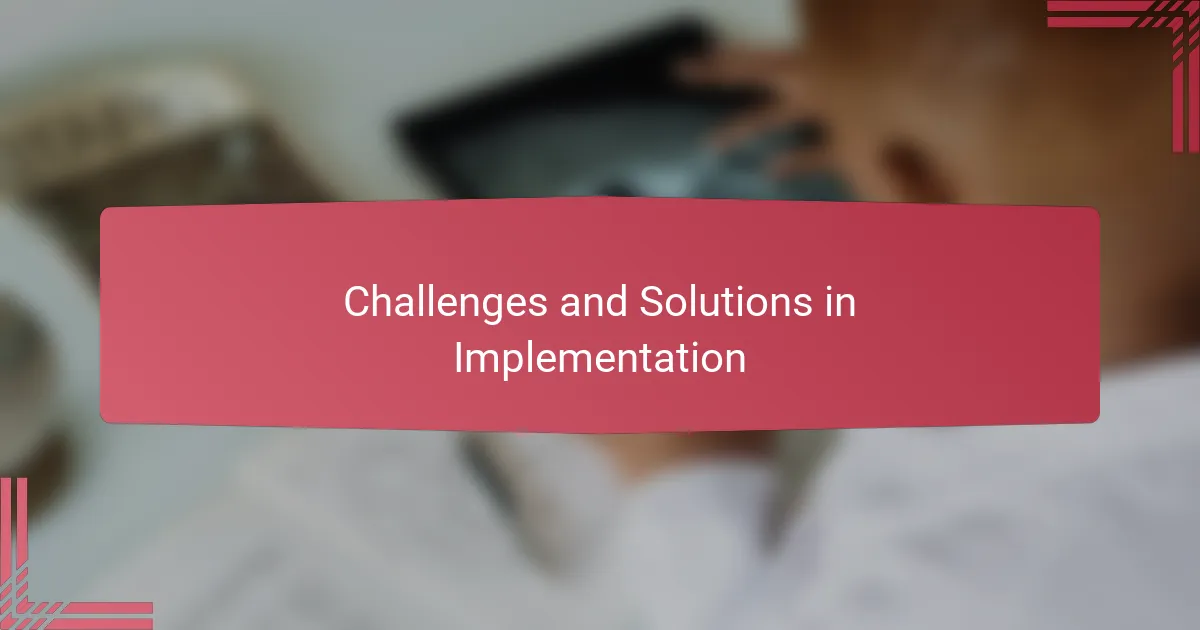
Challenges and solutions in implementation
One challenge I encountered was the initial hesitation around managing hands-on activities, especially with limited classroom time and resources. Have you ever felt that pressure to cover so much content that experimenting seemed like a luxury? What helped me was breaking activities into smaller, manageable steps using NASA’s detailed guides, which made it less overwhelming and more doable within tight schedules.
Another hurdle was ensuring that all students could actively participate, considering different learning styles and abilities. At first, I worried some might struggle with building models or understanding complex space concepts. But then I found that NASA’s diverse resource formats—like videos, interactive simulations, and simple hands-on kits—offered multiple entry points for engagement. This flexibility allowed me to tailor lessons so every student felt included and capable.
There were moments when technical jargon or advanced concepts threatened to confuse rather than inspire. I asked myself, how can I keep the wonder alive without losing students in complicated details? My solution was to connect activities to real-life questions my students cared about—“What would it be like to live on Mars?” or “How do astronauts stay safe in space?” Using NASA’s materials as a springboard, these relatable questions kept curiosity alive, making learning science a shared adventure rather than a chore.
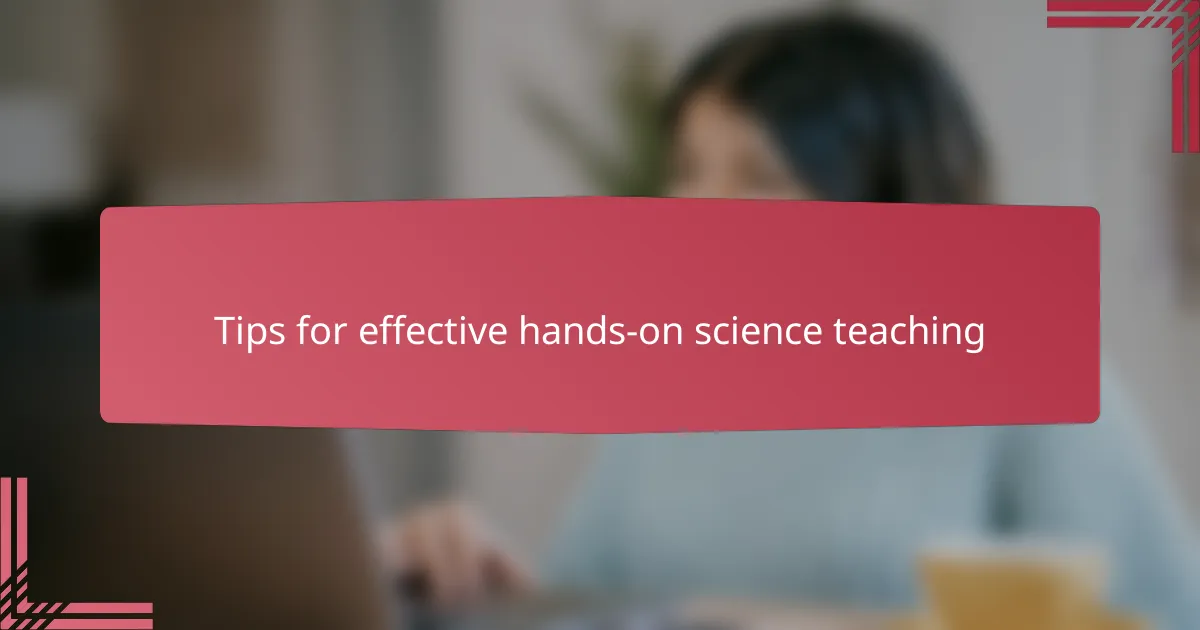
Tips for effective hands-on science teaching
From my experience, one crucial tip is to keep activities simple and hands-on, so students can immediately see the connection between what they’re doing and the scientific concept behind it. Have you ever noticed how a straightforward, tactile project sparks more questions than a lengthy explanation? That immediate engagement hooks their curiosity and opens the door to deeper understanding.
Another thing I’ve learned is to encourage curiosity by asking open-ended questions during experiments. Instead of giving all the answers, I try to prompt students to reflect: “What do you notice?” or “Why do you think this happened?” This approach transforms the classroom into a space for exploration rather than just instruction, empowering students to think critically and independently.
Lastly, organizing materials and planning ahead made a world of difference for me. I once forgot a key component during a rocket-building activity, and it threw off the whole lesson. Preparing kits or clear step-by-step guides, like those NASA provides, keeps the flow smooth and minimizes disruptions. What teacher wouldn’t want to spend more time facilitating discovery and less time troubleshooting?